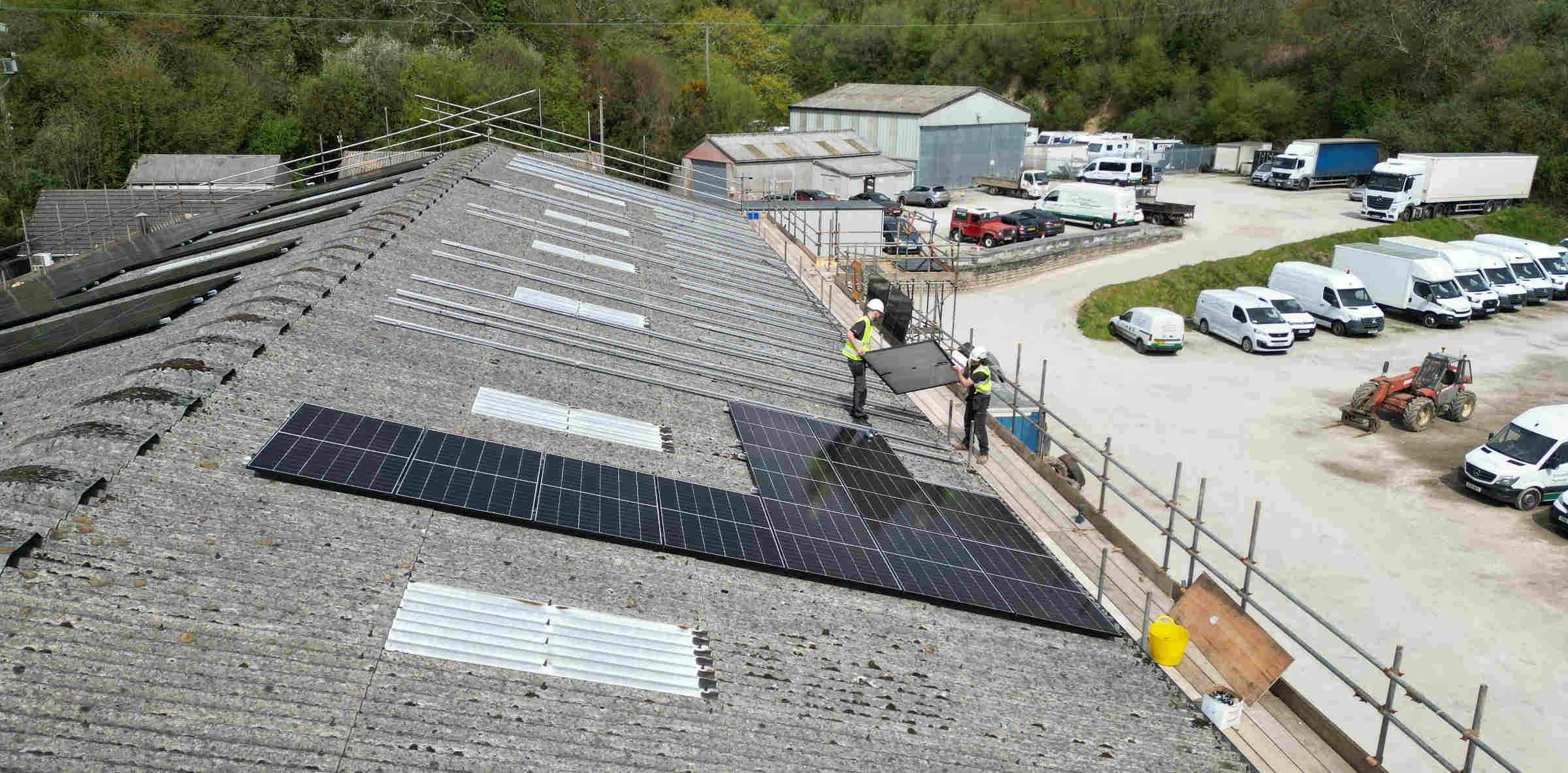
Driveline, St. Austell
The installation of such a large number of solar panels onto an asbestos roof creates a whole different set of challenges to contend with. Our engineers are qualified and experienced to undertake work in difficult scenarios such as this.
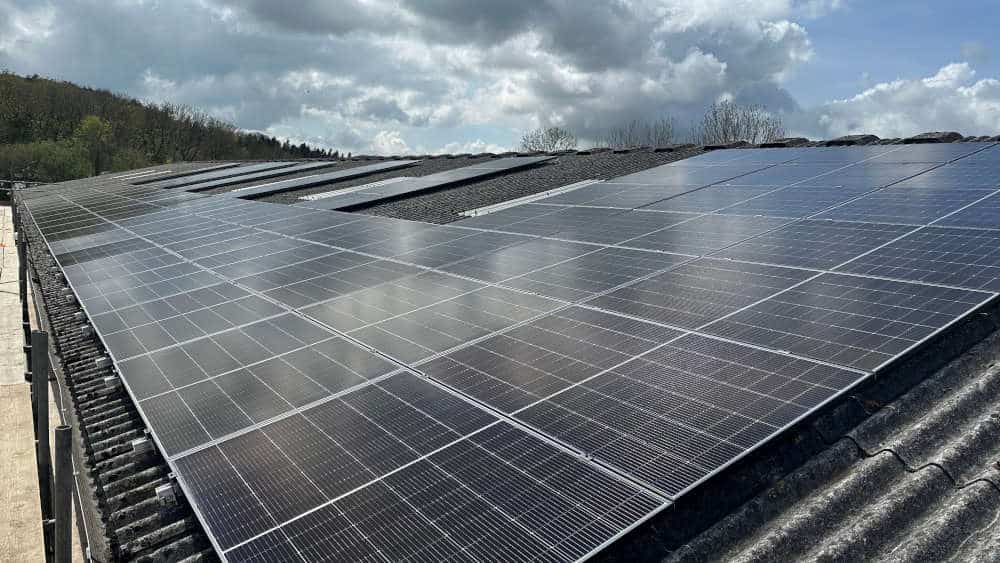
Project Overview
At Driveline in St. Austell in Cornwall, our team designed and deployed a system of 180 x 420W JA Solar PV solar panels, generating a total of 75.6kW of solar energy, along with inverters and a total of 41kWh of commercial battery storage from the Alpha smile T10, a true three-phase solution.
The customer on this job has a fairly high energy usage, with some high-powered equipment such as heavy-duty vehicle ramps to run from their system, so they should benefit very well from their new renewable energy production along with considerable income being generated from exporting excess generated power, particularly on weekends when they are closed.
Asbestos Roof Challenges
Engineers specially trained and qualified to deal with asbestos panels have to drill the roof. There is a serious health risk of someone potentially breathing in poisonous dust.
The roof panels themselves are brittle and can potentially break at any moment, putting those on top and underneath at risk.
Asbestos dust causes serious health issues including a breathing disease called asbestosis. We take this risk very seriously, as asbestosis can often lead to lung cancer. The engineers must also use boards to walk on at all times to minimize the risk of breakage.
This slows the job down quite considerably compared to a standard roof.
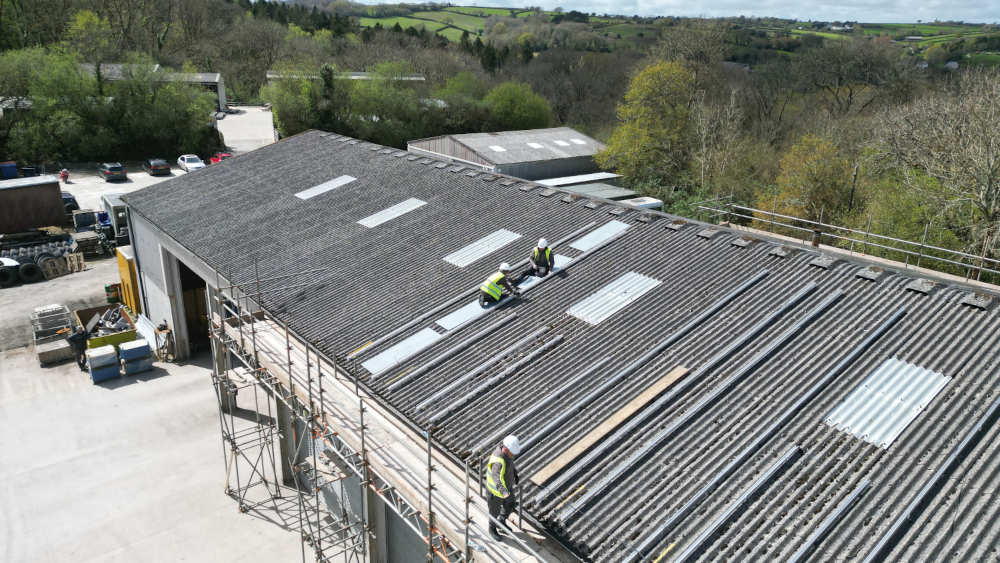
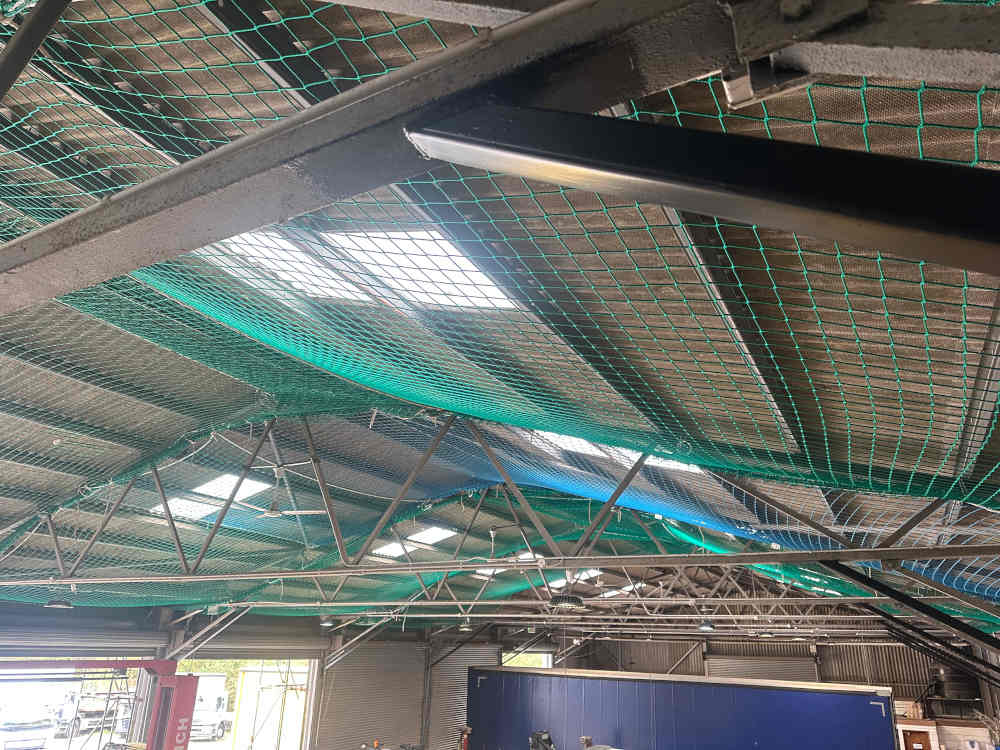
Working Alongside Asbestos
For this job, a sturdy set of scaffolding was required. We also needed to prepare the underside of the roof with protective safety netting before any work took place. This ensured everyone would be safe in the event of any accidents on the roof. Thankfully, there were none and all our training and precautions were adequate.
Drilling the roof itself and fitting the solar panel mounting system had to take place on weekends. This meant no workers were present in the building underneath. This helps to ensure that nobody would be breathing in any of the asbestos dust. Our dedicated team of roofers is flexible in situations like this. We can work dynamically to meet the individual needs of each installation.
Safety Matters
Fitting mounting systems to an asbestos roof takes a lot longer than that of a standard roof. It also uses a lot more resources.
Each hole required two engineers to drill. One drilling and one operating the vacuum cleaner removing as much of the dust as possible whilst drilling. They must both wear protective suits and breathing apparatus to keep them safe whilst the drilling takes place.
In order to work with Asbestos panels in this way, the team had to undertake the UKATA certification which comprises 10 different modules that cover every element of working alongside this hazardous material.
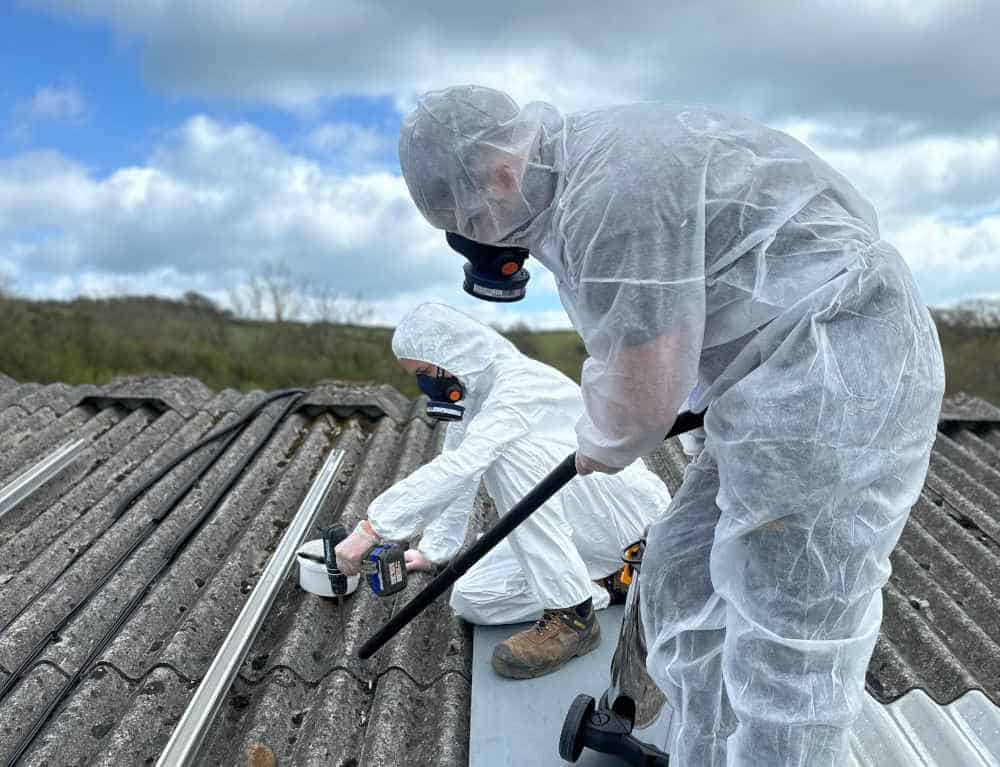
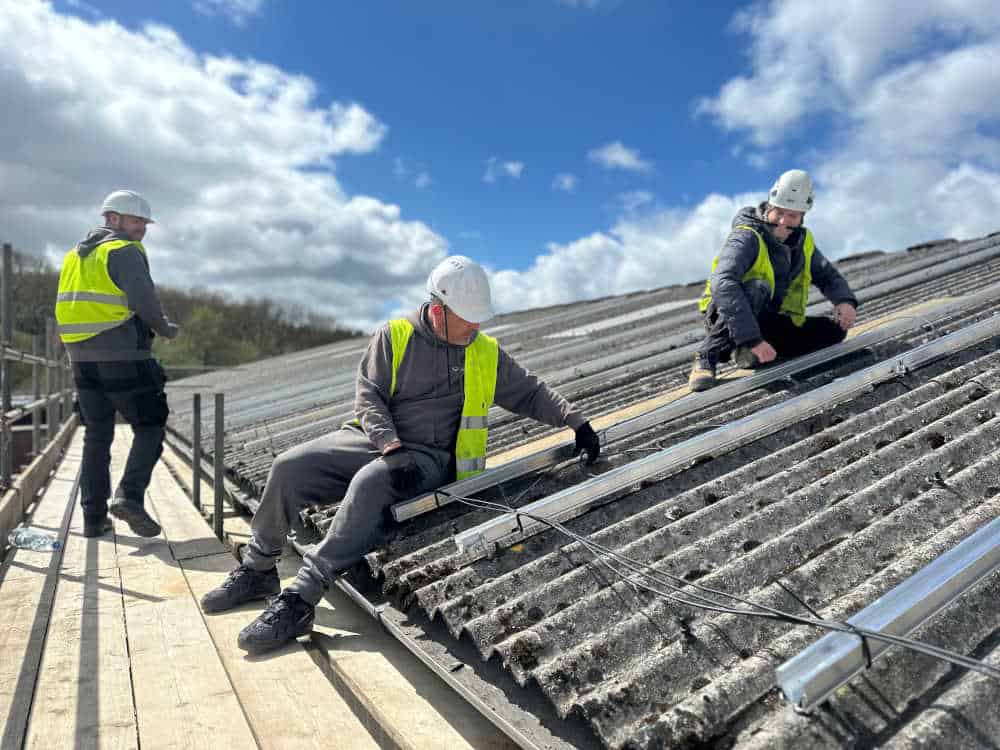
Once the mounting systems are up, the next task is fitting all the cabling.
For this job, we used a total of 650m of 6mm DC cable, along with 370 x MC4 connectors.
The cables run tidily along the length of the roof, then we routed them under the panels and along to the inverter and battery location inside the building.
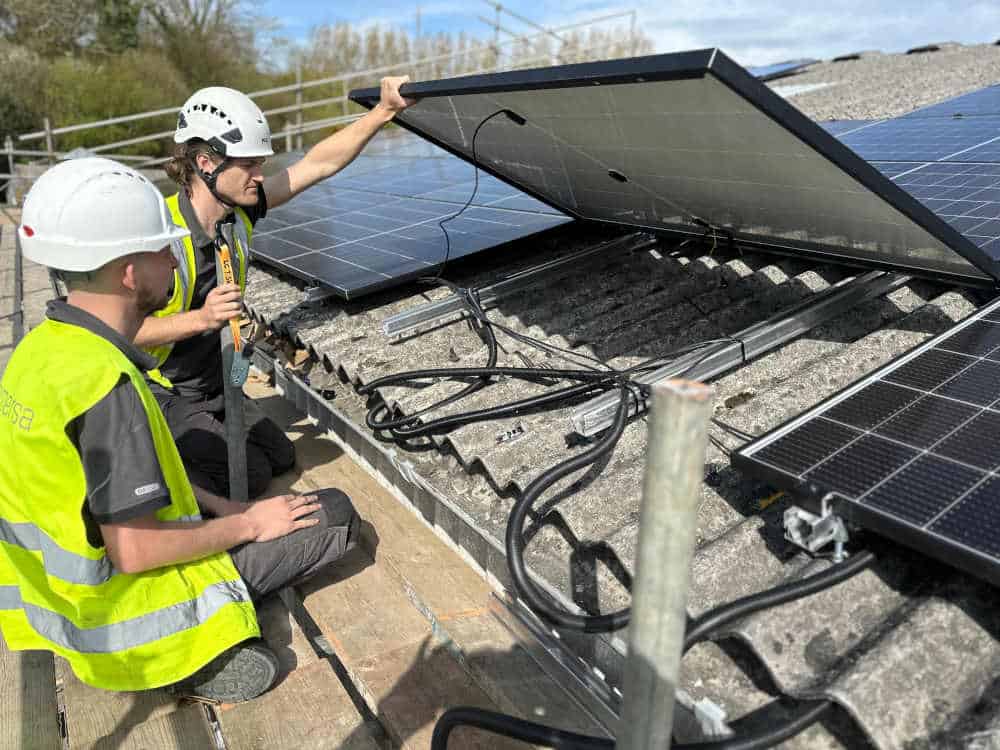
Solar PV Panel Installation
The solar panels themselves must be carefully lifted to the roof with a telehandler, 18 panels at a time.
This takes a high level of precision driving as a tiny error in judgement can result in a lot of damage!
Once a stack of panels has been safely lifted onto the scaffolding, they can then be carried into place and fitted to the mounting system.
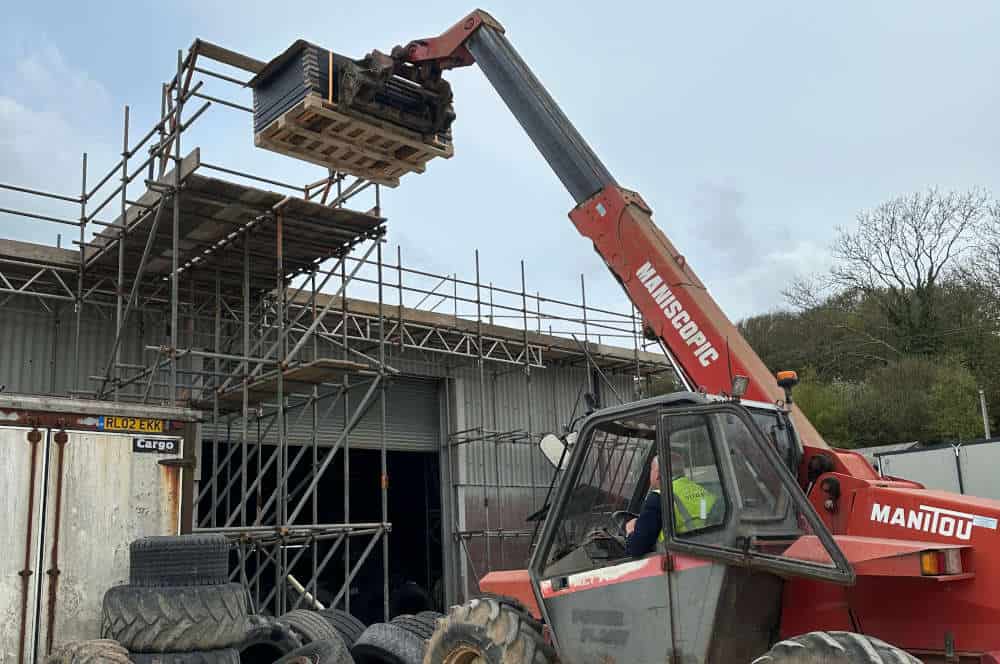
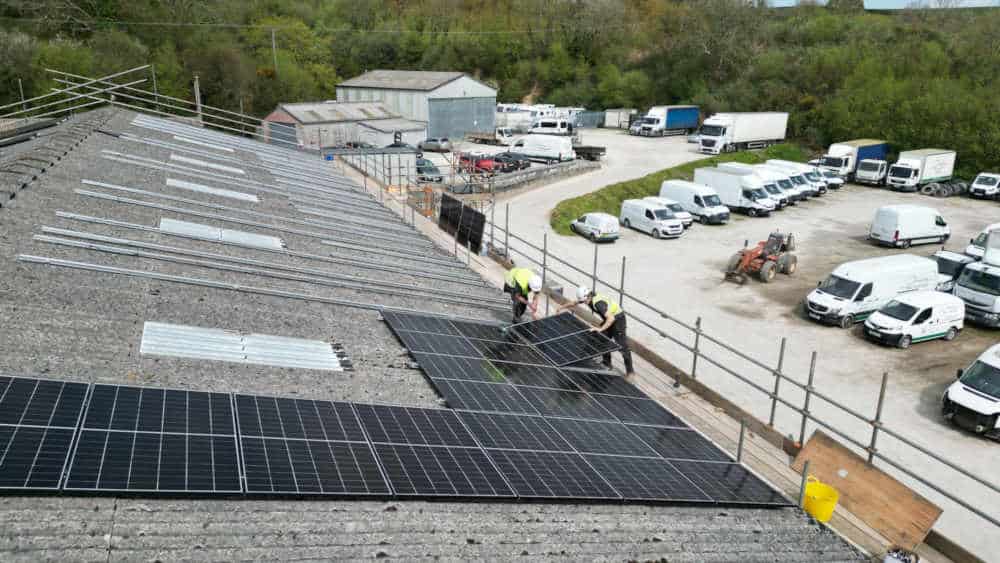
Our engineers then concentrate on installing the panels carefully into location, fixing them down safely into place, and connecting them all up to the wiring using MC4 connectors.
This in itself is a delicate operation. Boards must be used on the roof when walking on the asbestos panels. The engineers must always be very aware of their surroundings and weather conditions.
The conditions in Cornwall for this installation have been challenging, to say the least, with plenty of wind and rain to contend with and a couple of weather warnings during the installation, which again just added more consideration to the timeframe.
Battery and Inverter Installation
Once all the panels are up, it’s back to the wiring team to hook up the ten strings of solar PV panels to the inverters, set everything up, and test the system. All that’s left to do then is to hand it over to the new owners and show them all about how to use their new equipment.
The customer on this job has a fairly high energy usage, with some high-powered equipment such as heavy-duty vehicle ramps to run from their system, so they should benefit very well from their new renewable energy production.
In this instance, we installed 41kWh of storage from the Alpha smile T10 range, alongside two Solax invertors. This gives the client a true 3-phase supply for their workshop below.
If you want to find out more about a solar panel or battery storage installation at your commercial or business premises, please get in touch today and one of our experienced advisors will be in touch to discuss your requirements
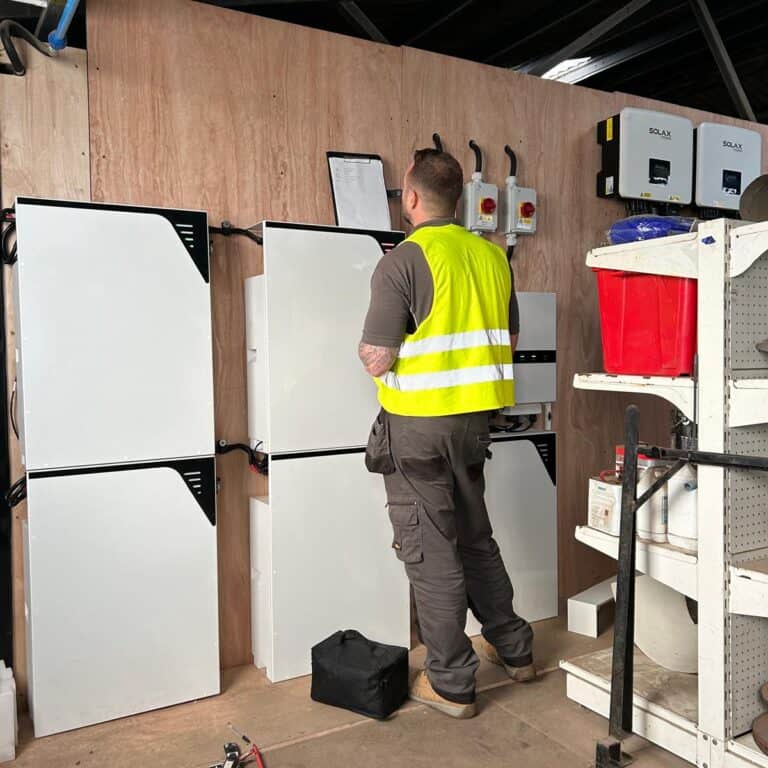
PROJECT VALUE: £95,000
CONTACT
Terms and Conditions | Cookie Policy | Privacy Policy
© Immersa. All Rights Reserved.
